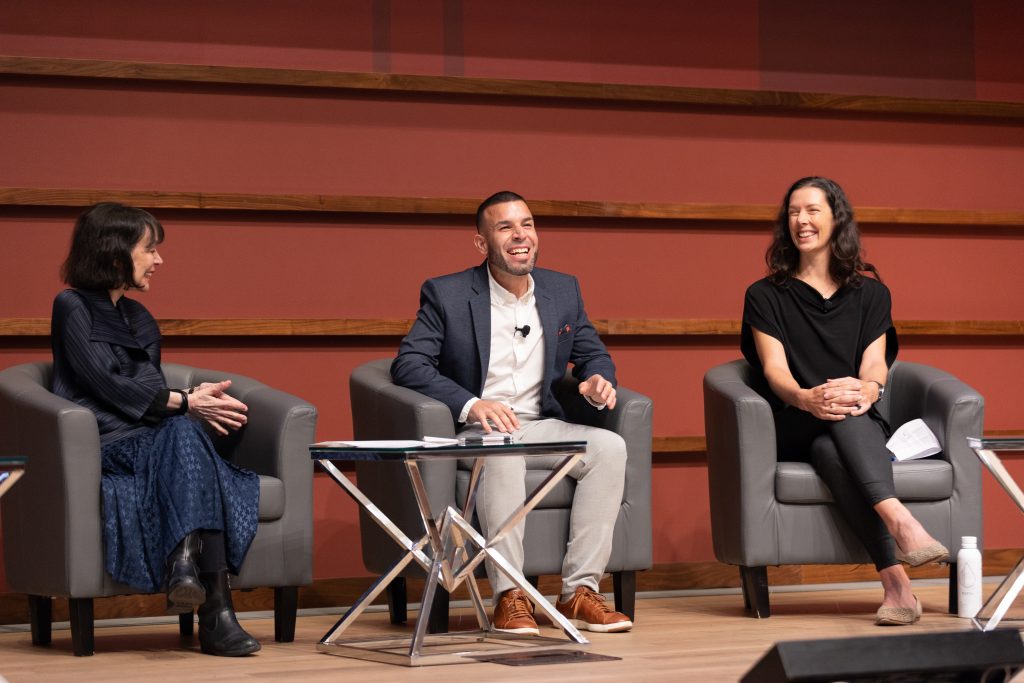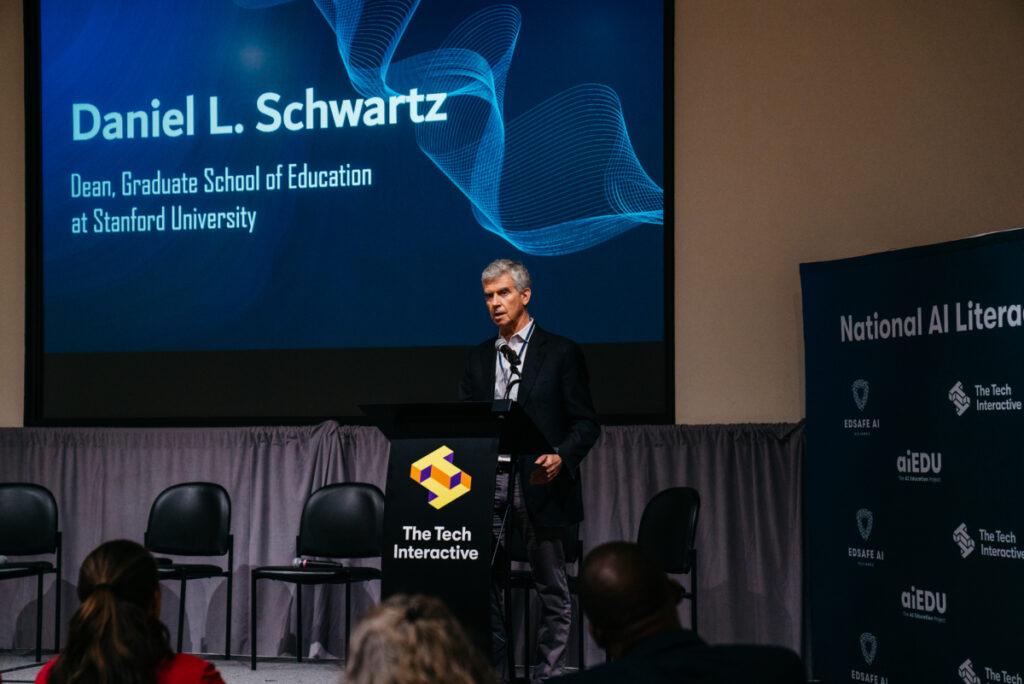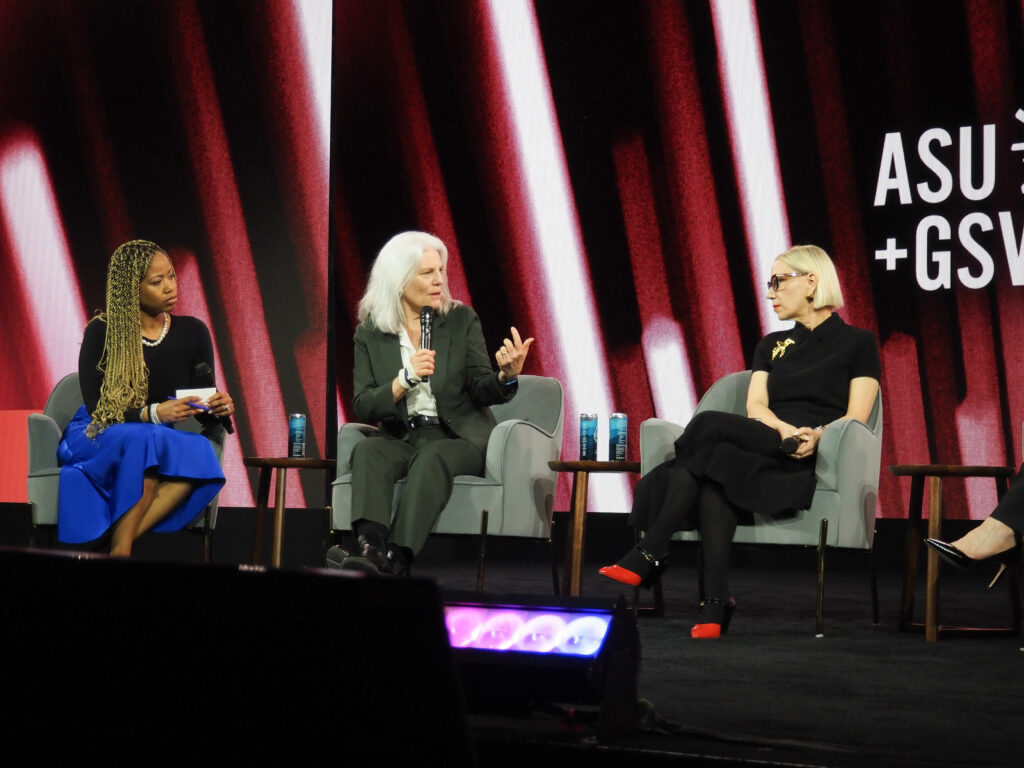A simple introduction proved a fitting start to the “Energizing the Potential of All Learners” Summit co-hosted Sept. 28 by the Stanford Accelerator for Learning. The day was dedicated to exploring the many ways education is changing around the world, perhaps more rapidly now than any time in recent memory.
The introduction, by summit emcee, Dr. Lisa Chamberlain, welcomed Stanford University president Marc Tessier-Lavigne for opening comments. The symbolism lay not in the words of Chamberlain or Tessier-Lavigne, but in their work. Chamberlain, a pediatrician, welcomed Tessier-Lavigne, a neuroscientist, who opened a day-long conversation about learning.
This, of course, was not by accident. Their presence illustrated how Stanford is positioning itself to improve learning by facilitating interdisciplinary collaboration between educators and experts outside of traditional education—from human health and neuroscience, as Chamberlain and Tessier-Lavigne exemplified, but also other fields stretching from data science and technology to psychology and policy.
“Around the world,” Tessier-Lavigne said, “educators are being empowered by new insights into how the brain works, unlocking the mysteries of how we learn.”
“Technology and knowledge are advancing at the speed of light,” he continued. “We're on the cusp of discoveries that have the potential to improve how we design and organize educational opportunities across a person's lifespan.”
But, he added: “The science and design of learning must evolve to match the needs of learners at all stages, and especially those who are most vulnerable to falling through the cracks.”
With that, Tessier-Lavigne welcomed the day’s first keynote speaker, Daniel Schwartz, dean of Stanford Graduate School of Education and faculty director of the Stanford Accelerator for Learning, a university-wide initiative aimed at solving the most pressing challenges in education.
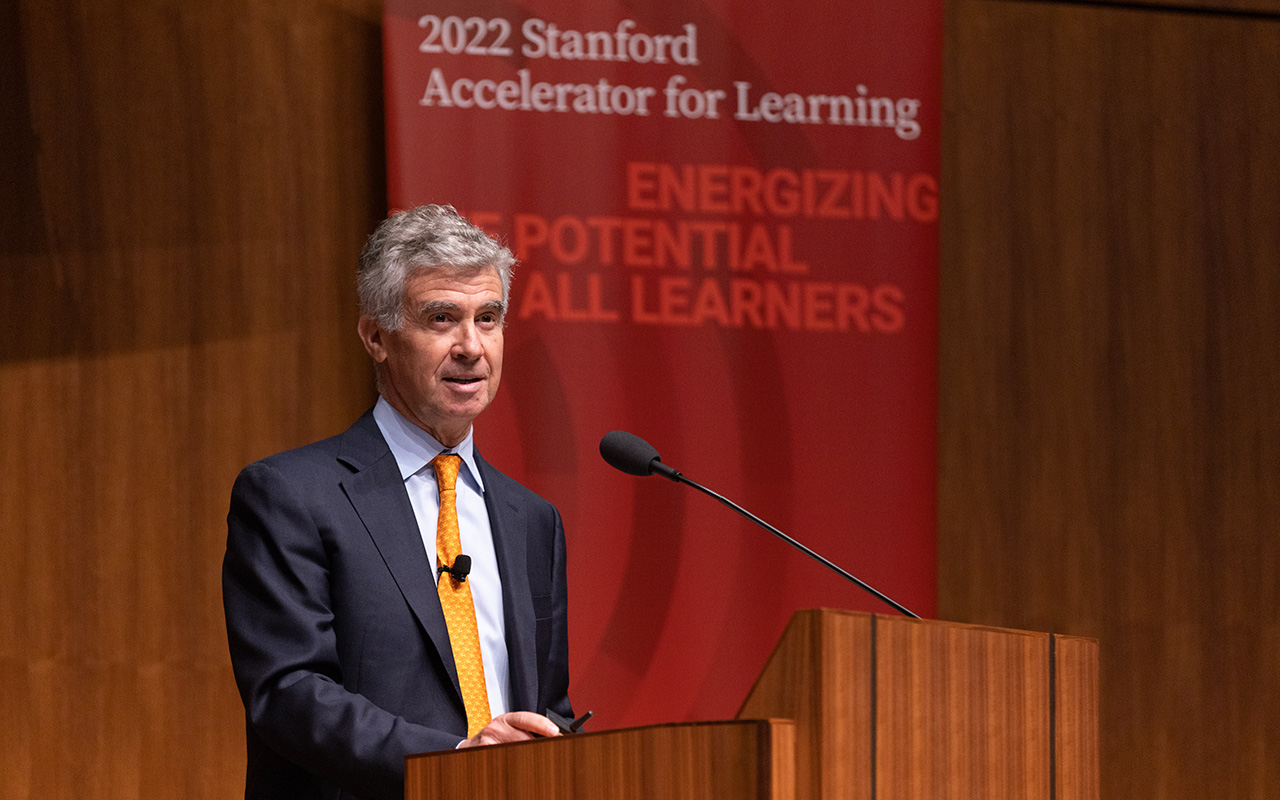
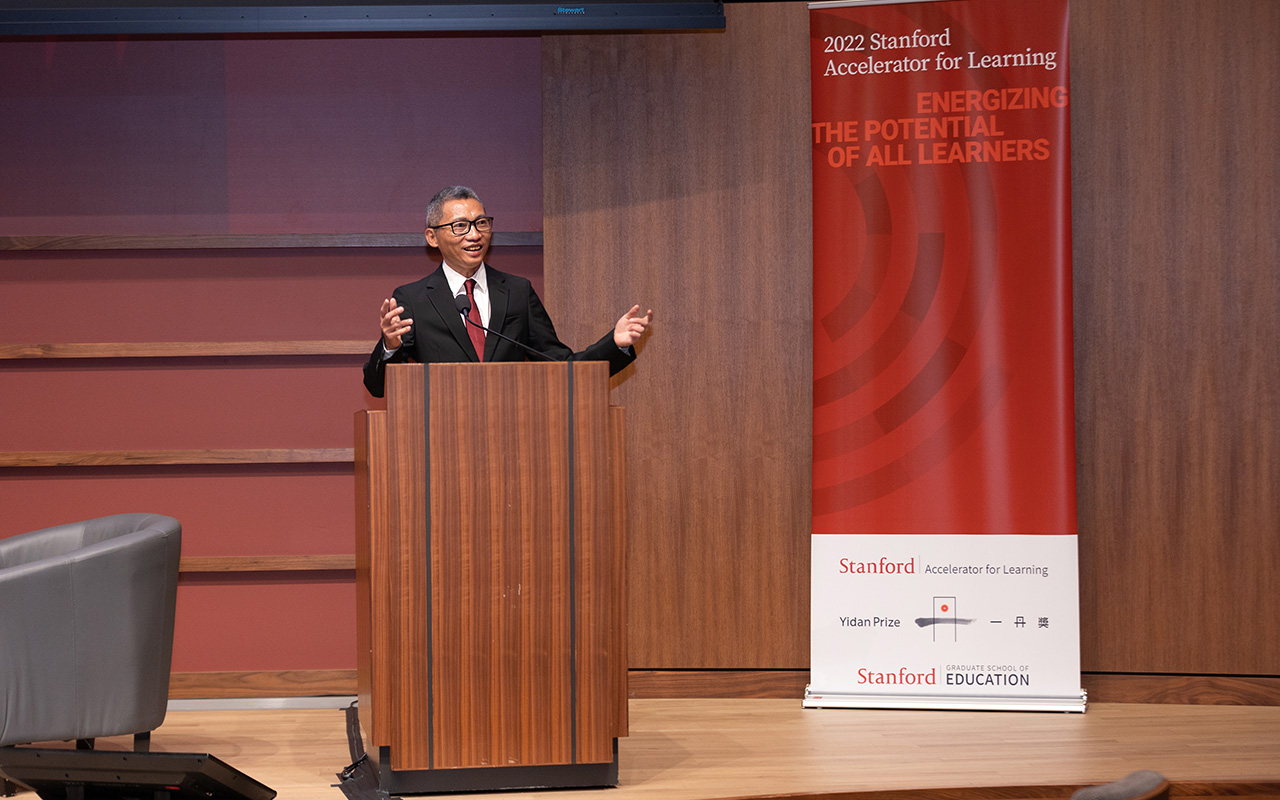
Schwartz elucidated a personal “Theory of Change” that served as the organizing principle for the summit, which was co-organized with the Yidan Prize Foundation, which awarded its $4 million eponymous prize at the end of the day to Stanford Professor emerita Linda Darling-Hammond for education research and Professor Yongxin Zhu, founder of the New Education Initiative, for education development.
Drawing inspiration from the historic shift to heliocentric model of the solar system inspired by astronomers like Copernicus and Galileo centuries ago, Schwartz laid out the preconditions that made that important transformation possible and which he believes will drive the revolution in education today.
Both are driven by data. The astronomical revolution would not have been possible if it weren’t for Tyco Brahe’s pointillist-like precision measuring the movement of the heavens. Similarly, educational change is being driven by data from fields like neuroscience and from classrooms via test scores, video interactions or other modes.
Technological advancement was also critical element of both. The internet-enabled computer is to today’s educator what the telescope was to Galileo. “Technology offers the prospect of universal access to A-plus learning experiences,” Schwartz said. “It creates a fundamentally new way of teaching.”
Just as the world once shifted from geocentrism to heliocentrism, education is now shifting from curriculum-centric to learner-centric models. This new approach is founded on the needs and experiences of identifiable groups of learners rather than one-size-fits-all content-based approaches.
“New sources of evidence are enabling instruction tuned to the needs of specific learners,” Schwartz noted. “Data and technology and science are making inroads on previously intractable problems.”
At the heart of all this collaboration, Schwartz said, is the university—hotbed of research, technical innovation, theoretical advances, and new practices. “We’re at an inflection point of what a research university can do to improve all lives through learning,” Schwartz asserted, as he introduced the day’s first panel.
All Inclusive
In considering how to make education more inclusive of under-resourced and marginalized learners, moderator Liz Willen, editor-in-chief of The Hechinger Report, pointed out a fundamental deficit of skills worldwide. Two-thirds of the world’s youth, she said, never reach basic skill level. How do we right that ship, she asked?
Eric Hanushek, an economist, led off saying that the answer is tied directly to global prosperity. Make schools better and imbue those skills and the world’s productivity might be “five times” what it is today. “The only research-based component solving this problem that I know of is to rely on our most highly effective teachers,” he said.
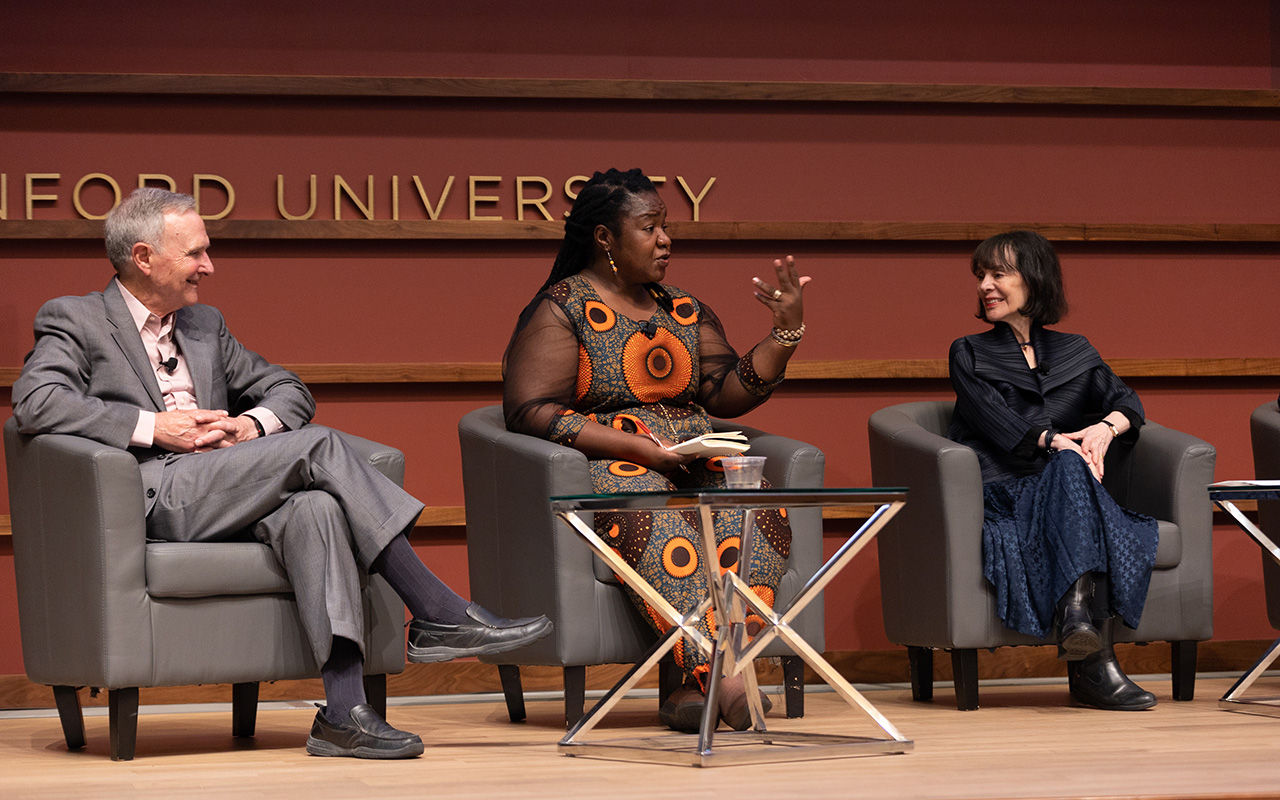
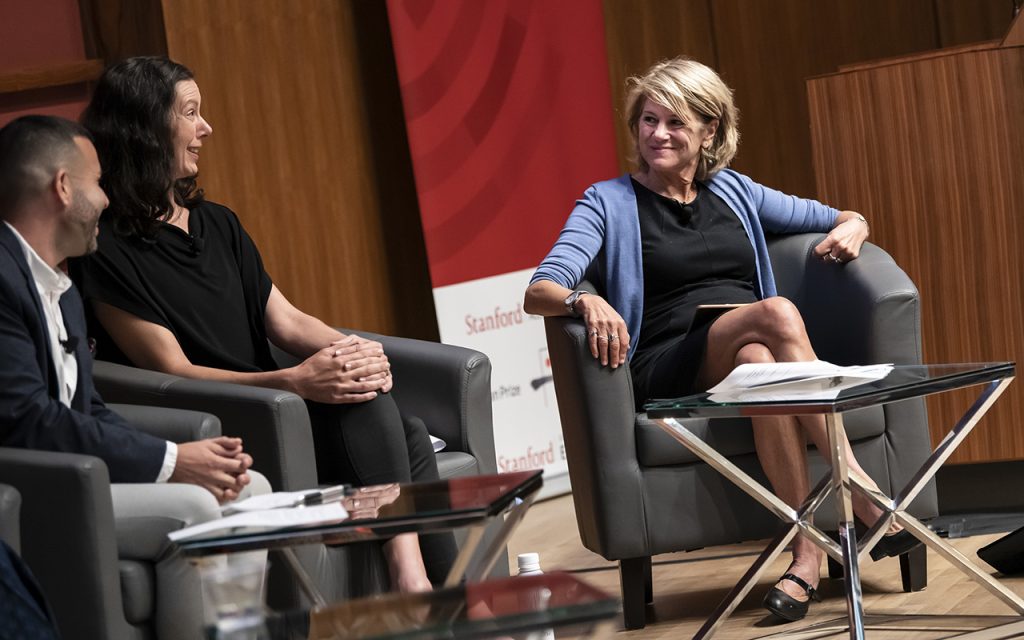

Angeline Murimirwa sees things from a different perspective. She organizes girls’ schools in Africa. Inclusion is a matter of ending exclusion. The girls who are her focus are often kept out of school and, even when they enroll, they are excluded in class. “We’ve got to help these girls who have succeeded against all odds navigate these realities that are often invisible and help them get into classes and to succeed,” Murimirwa said.
Psychologist Carol Dweck built upon that concept, noting groundbreaking research into what she calls an all-important growth mindset in students. Students must understand that their intellectual abilities are not fixed, and that education is the way to rise. A growth mindset is a predictor of achievement and of well-being. Most promising, Dweck said, is that “these results were strongest for students from underrepresented groups.”
In Chicago’s Latino communities, linguistic anthropologist Jonathan Rosa studies how language is often a tool of exclusion for the 5 million English-learners in the U.S. He points to monolinguistic administrators, policymakers, and educators charged with addressing the presumed linguistic deficiencies of multilingual communities. “It’s an upside-down reality,” Rosa said. “Change comes when you redefine what counts as a skill and protect student well-being.”
Policymaking was the final piece of the puzzle. Associate Professor Patricia Bromley has studied policy in detail, looking at 10,000 reforms across 183 countries over a period of decades. She said that policies are often made to preserve the dominant elites. Education is a tool of exclusion that is rooted in policies that must change. When an inclusive policy change works and other nations adopt it, things snowball in a virtuous circle around the globe, Bromley said.
Early and Often
The Summit’s second panel focused on the promise of early childhood education. Here again, data leads the way, said panel moderator, Patricia Kuhl, an expert in early childhood development at the University of Washington.
“Early learning and brain development is … the new Webb telescope. New studies are showing stunning changes that take place in the young brain produced by experience,” Kuhl said. She has conducted experiments showing that parental speech leads directly to the growth of myelin connecting the listening and speaking regions of a child’s brain. Another study showed that neurons fire in synchrony when people are in positive social situations.
Stanford educational neuroscientist Bruce McCandliss reinforced Kuhl’s point. “This is a profound shift … a child interacting with caregivers has a causal impact on the way the neurons are forming.” Education, he added, is poised to be one of the most transformative forces in life. McCandliss is amidst a study in which learners get brain scans every two years to map their developing brains. Neurons, McCandliss declared, are “an amazing biological endowment. We’re all billionaires!”
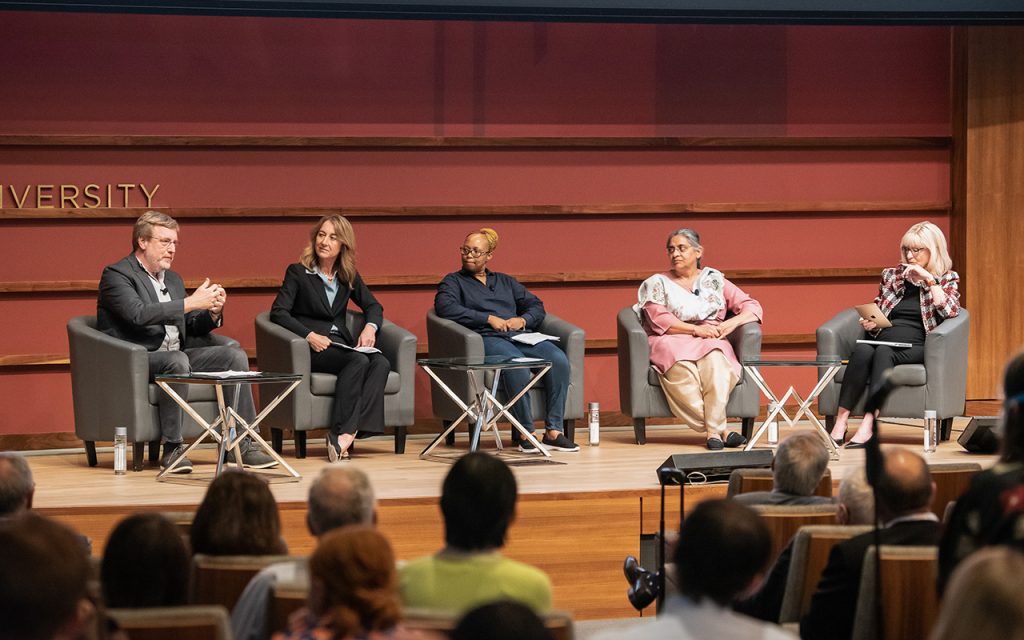

Liz Chamberlain, the day’s emcee, also joined Kuhl and panel. As a pediatrician, she sees link between social connection, education and human health every day. She counsels against the deficit-based model of childhood development—i.e., what’s missing—in favor of looking at the positive factors that make children more resilient. The data, however, are lacking.
“Neuroscience on early childhood education is a real opportunity that we have not yet tapped,” Chamberlain said.
As an educator in Africa, panelist Susan Bipa said “every child has the right to play” in a safe, unbounded, physical environment where they are free to experience the world. Bipa builds what she calls “labs” where children are encouraged to play.
In India, panelist Rukmini Banerji is witness to a trend where parents strive to get their children in “school” from the earliest age. The period between three and eight, she said, should be a time of rapid development and self-directed learning. We should see it as a “continuum” of learning that includes a combination of play, physical activity and curiosity in a group setting. “A lot of inequalities … can be ameliorated when you're part of a group,” she said.
Touching on the sensitive topic of screentime for early learners, Chamberlain reflected on the double-edge nature of technology in education. She said that screens are no replacement for human contact, but technology has allowed her to stay in daily contact with patients she might otherwise see only occasionally. “We need to be really careful with technology, but I think it offers us incredible opportunities to reach some of the most difficult-to-reach folks,” Chamberlain said.
“Measurement and assessment can be a great place to start to work together,” Banerji said of promise of multidisciplinary partnerships.
Difference with a Distinction
Noting that a disproportionate number of children with disabilities, moderator of the third panel, Charlotte McLain-Nhlapo, began a discussion on ensuring that those with learning differences are not left out in the wake of change.
Disability rights activist, Judy Heumann, who had polio early in life, said things have changed dramatically since she was young. Early on there was no right in the United States to education for disabled children until a 1973 federal law mandated it. Heumann, meanwhile, highlighted a growing number of studies that show that when students of varying learning styles are blended in a classroom, all students do better, not just those with differences.
Stanford pediatrician Dennis Wall, who is using neuroscience to diagnose autism as early as age 18 months, has developed Google Glass’s augmented reality functionality that helps autistic children make sense of the social-emotional cues of people around them. “It helps them orient to a face and appreciate the differences of the emotion in that in that face,” Wall said.
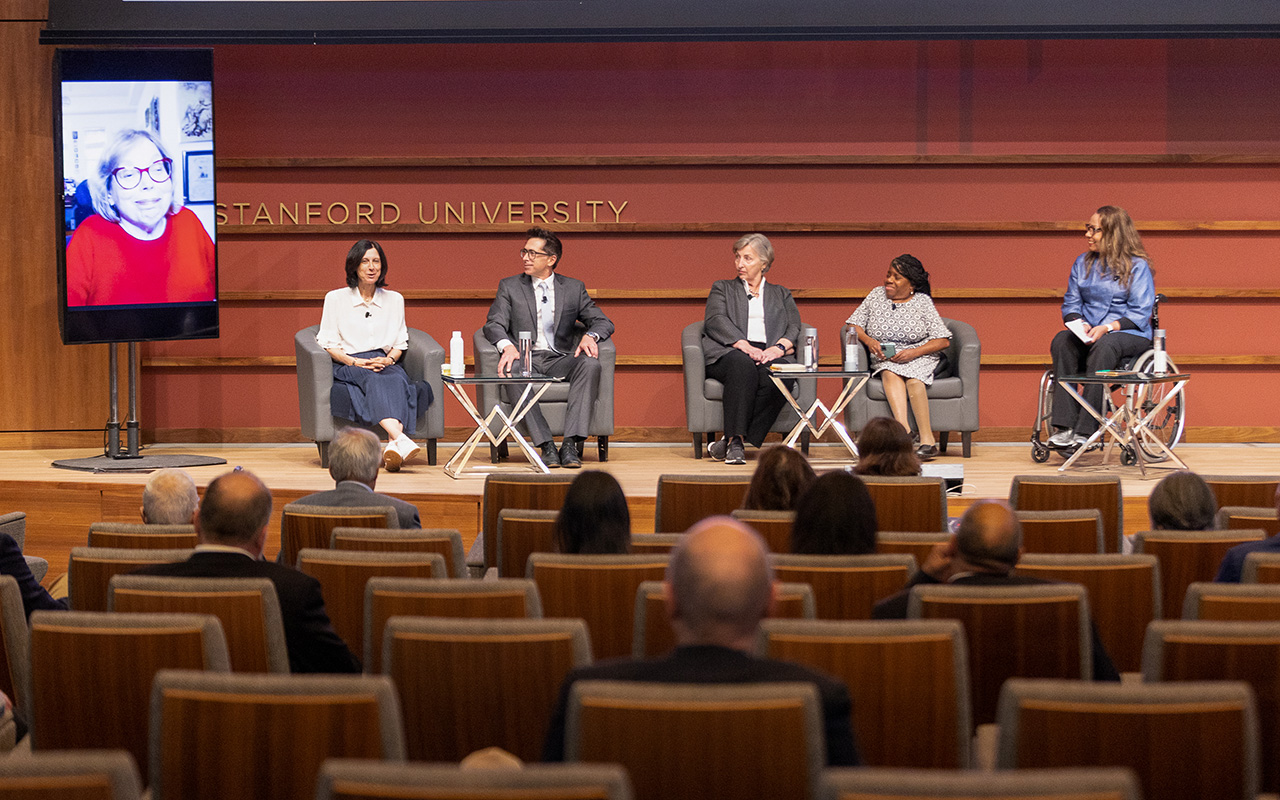
Equity advocate Seena Skelton says issues of inclusion are often considered the bastion of policy-makers, not of researchers, but this is a grave mistake. She encourages greater inclusion of learning differences in study cohorts. “Nothing about us without us,” she said of her mantra for studying educational equity. Shift the focus from research on students, to research with them. “Blur the lines between research and practice so that we're actually engaging in both at the same time,” Skelton said.
Professor Usha Goswami of the University of Cambridge noted that her studies show that learning differences have nothing to do with effort. “The children in our studies discover it’s just something your brain is doing a bit differently than everyone else's … it's not their fault.”
The goal then is to create curricula that values and responds to those differences to support and empower the students.
Panelist Elizabeth Kozleski, a research professor at Stanford GSE, said we need an active, engaged dialog with policymakers who often don’t want to analyze data. “We need to have an evidence-based education system where data counts when you're making policy,” Kozleski said.
McClain-Nhlapo concluded with another call greater inclusion: “Ensure that persons with disabilities are also educators, researchers, and policymakers. I think that that lived experience becomes an important asset in addressing this issue.”
Looking Ahead
The day’s final session began with a second keynote address. Philip Fisher, professor at Stanford GSE, returned to the theme of learners at the center. “Moving away from the idea of curriculum as the way in which we learn and really thinking much more about individuals and about variation is really where we should be headed,” Fisher said.
To date, education has been a black box, he said, but better research techniques and tools, and better data, can open that box to reveal important new knowledge that can help education evolve faster than ever. To effect change, Fisher stressed not losing sight of the analog world in which we live and work.
“Relationships are really where learning is cultivated. The interactions between adults and children, between children and other children are really where it happens,” Fisher noted.
A Final Analysis
Former Secretary of State Condoleezza Rice moderated the final panel, charged with synthesizing the day’s messages, bringing research, data, technology, policy and practice together in a vision to fundamentally change education.
Wasting no time, Rice cut to the quick with a question about the disappointments in restructuring learning to date put to former Stanford President John Hennessy, an engineer and technologist. “Why haven’t we made more progress, John?” she asked.



The answer, Hennessy admitted, was that the problem was much harder than anyone had anticipated. Technological approaches to access, like Massive Open Online Courses (MOOCs) that once promised to make available Stanford-level education to 10,000 students at a time, fell short of expectations. “Ninety percent of the students didn’t have the prerequisites,” Hennessy opined. “Just putting up content wasn’t enough.”
Meanwhile, Vicky Colbert, founder of Fundación Escuela Nueva and an alumna of the Stanford GSE, noted that with 85 percent of the world’s youth in Africa and Asia in 20 years, global change will likely come from the margins of society. She sees four key components of any successful strategy: curriculum, child-centeredness, teacher training, and deeper relationships between schools and their communities. Public-private partnerships will be critical. Resistance is likely. “I sometimes think that the politics is the hardest part,” Colbert said.
One person who has offered a ray of hope in technical innovation was panelist Sal Khan, founder of Khan Academy. To succeed, education must be accessible, people must be aware that it exists, the content must be engaging and, lastly, the content must work. In that regard, gamification of education may be technology’s strongest asset, Khan said. “Engagement is really the ultimate question. Can we make it so that kids really want to do it?” Khan said.
For Amazon’s Candace Thille, who is charged with educating the company’s 1.6 million employees worldwide, the challenge is all-too real. “Old mechanisms of education don't work and … data collection becomes really important.” Faced with the challenge of teaching Amazon employees the nuances of interviewing new candidates, her team turned to Alexa, the company’s ubiquitous artificially intelligent voice assistant to serve as stand-in applicant in the interview process.
The Chan-Zuckerberg Initiative’s Brooke Stafford-Brizard, for one, is eager for the future. “I'm very optimistic. I think we are … embracing a broader definition of success and expanding what we think of when we think of a diploma … If we can reframe education as holistic human development and recognize academic rigor is a piece of it,” she said. “I think we'll all move the system.”
Watch the entire summit
All photos by Light FX Photography
Video by Stanford Video
